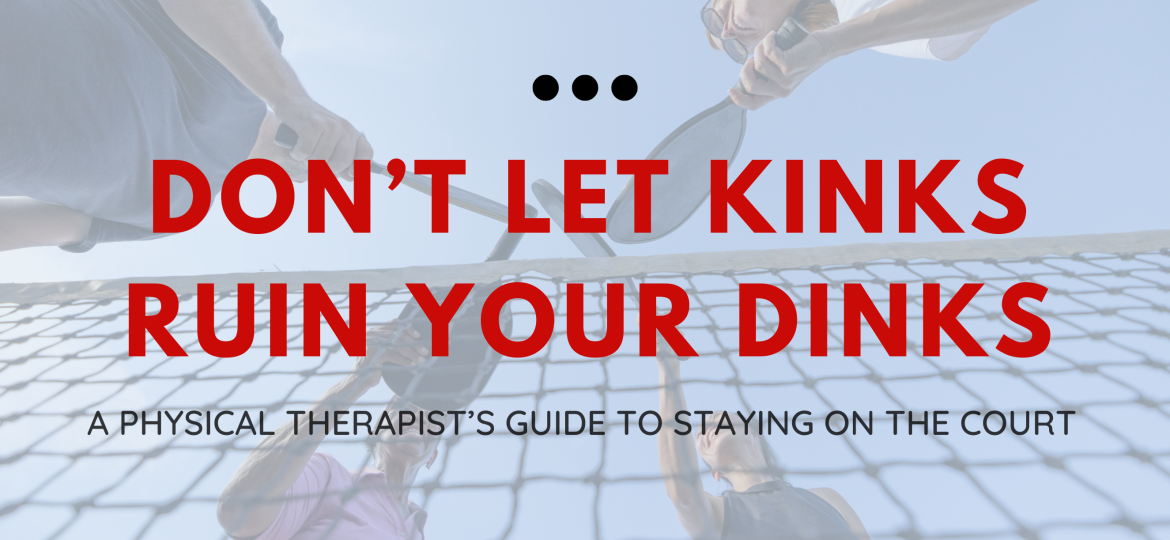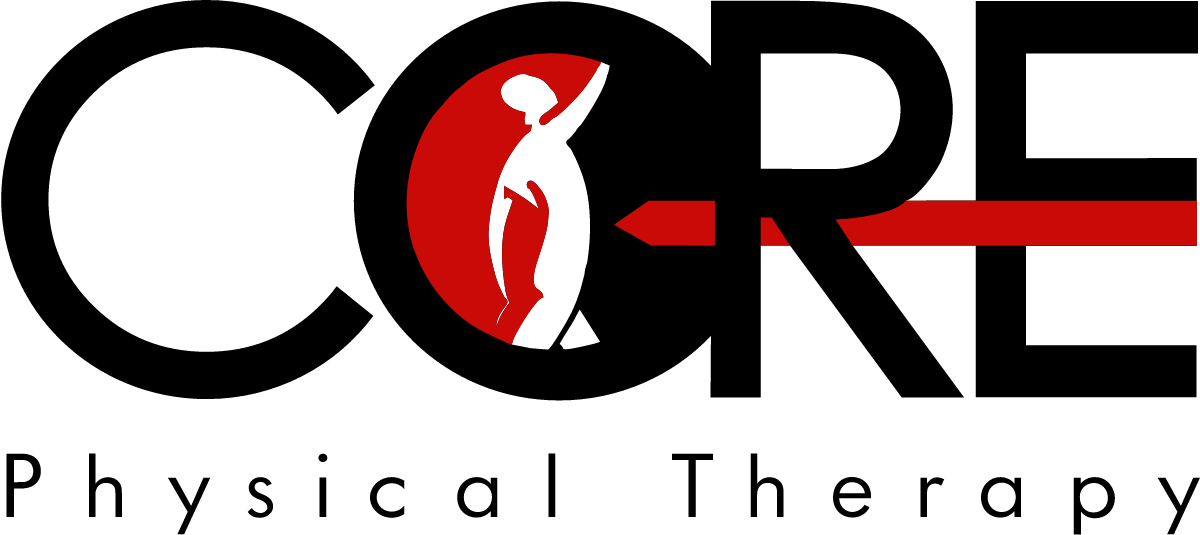
This blog post was written by our PT David Porter, a physical therapist at Core Physical Therapy.
Pickleball: It’s fast, it’s fun, and it’s taking the world by storm. But while you’re perfecting your dink, smashing that volley, and working your way up to the kitchen line, there’s something else you should be thinking about—your body. Yes, you heard me right. Before you get too caught up in the thrill of a third shot drop, let’s talk about how to keep your pickle in the jar (i.e., avoiding injuries) and ensure you’re still playing strong in the long game.
Common Pickleball Injuries
Pickleball may look like a leisurely game, but don’t let its friendly nature fool you. The quick lateral movements, sudden pivots, and repetitive swinging motions are all ingredients for a recipe called “ouch.”
Some common pickleball injuries include:
- Pickleball Elbow (Lateral Epicondylitis): Similar to tennis elbow, this overuse injury results from repetitive wrist and forearm motions during those intense rallies.
- Achilles Tendonitis: Those quick sprints to reach a dink just over the net can put a lot of strain on your Achilles tendon, especially if you’re not properly warmed up.
- Rotator Cuff Strains: That overhead smash might win you points, but it can also lead to shoulder strains if your muscles aren’t up to the challenge.
Don’t Get Caught in a Pickle: Training Strategies for Injury Prevention
Now, you might be wondering, “How do I keep my body in top shape for the next time I hit the court?” The answer is simple: train smart, not hard. Here’s how:
- Warm-Up Properly: Before you even think about stepping into the kitchen, start with a dynamic warm-up. Think leg swings, arm circles, and lunges. This will increase blood flow to your muscles and prep them for the demands of the game.
- Strengthen Key Muscle Groups: To avoid being pickled by injuries, focus on strengthening your rotator cuff, core, hips and leg muscles.
- Flexibility and Mobility Training: Just as you wouldn’t leave a pickle jar half-open, don’t leave your muscles half-stretched. Yoga, foam rolling and purposeful stretching routines are excellent ways to maintain flexibility and ensure you’ve got full range of motion on the court.
- Dynamic balance training: Training your balance is vital in order to improve the proprioception and coordination necessary to maintain control during high-speed play and rapid directional changes. It could mean the difference between the opportunity for an Erne all your friends will never forget OR a sprained ankle that you’ll never forget.
- Rest and Recover: Don’t forget that rest days are just as important as training days. Your body needs time to recover, so take a break from the court to avoid overuse injuries.
The Unsung Hero: Myofascial System in Pickleball Longevity
You’ve probably heard about muscles, tendons, and joints, but what about your myofascial system? Picture it as a sticky web of connective tissue that holds everything in place. If it’s tight, it can restrict your movement and lead to pain or injury. But when it’s healthy, it keeps you flexible and resilient.
Now if you’re the type of person who finds themselves down YouTube rabbit holes researching ways to improve your pickleball swing, you’ll probably also enjoy a deeper dive into understanding your fascia and how it plays an integral role in your body’s movement.
To learn more about fascia and how physical therapists, like myself, can address the body’s natural asymmetries before they become more significant issues: A Complete Guide to Myofascial Release Therapy (coreptiowa.com)
Conclusion: Play Smart, Stay Strong
Pickleball is more than just a game; it’s a way of life. But to keep enjoying it without getting sidelined by injuries, you need to play smart. By warming up, training properly, and taking care of your myofascial system, you’ll keep your body in the game for years to come. So, next time you’re on the court, remember: it’s not just about winning—it’s about staying in the game. And with a little care, you’ll be dinking and volleying long after others have hung up their paddles.
If you want to stay on the court, but are unsure of how to address any or all of these important aspects of training and injury prevention, Core Physical Therapy now offers out-of-pocket Whole Health appointments. So if you’re looking for training support, injury prevention or promotion of general wellness I’m certain we have a Whole Health package perfect for you.
As always, if you are in pain and need someone to assist you on your road to recovery back to the service line, I’d be honored to partner with you as your physical therapist.
To have your specific needs evaluated and create a customized plan for YOU, schedule an appointment here with David.
